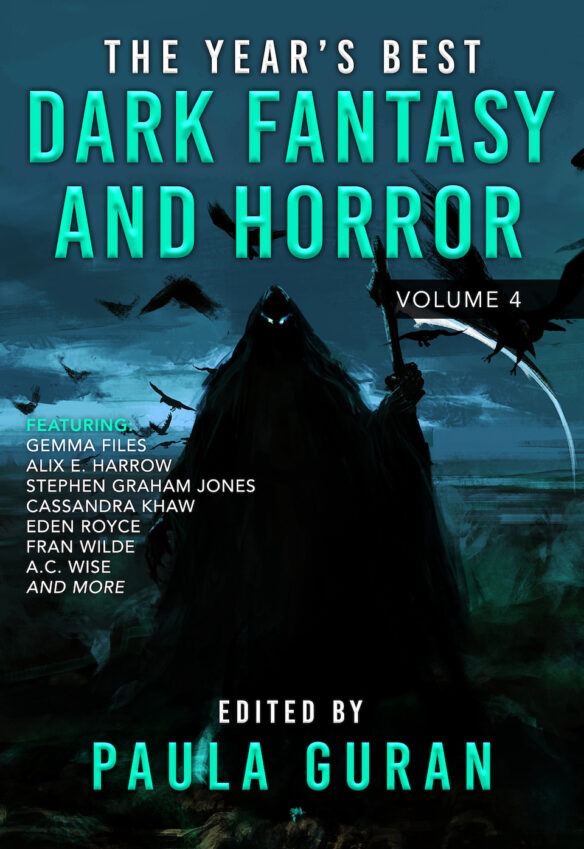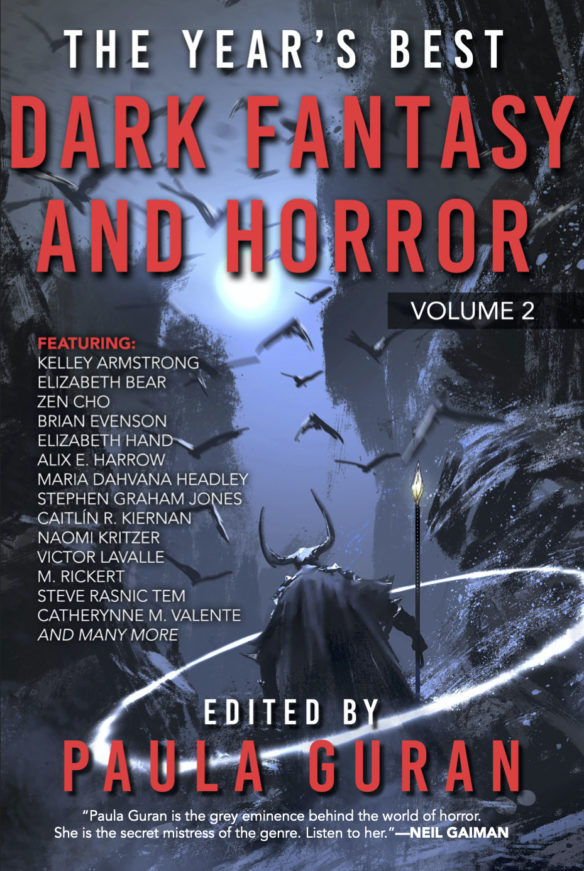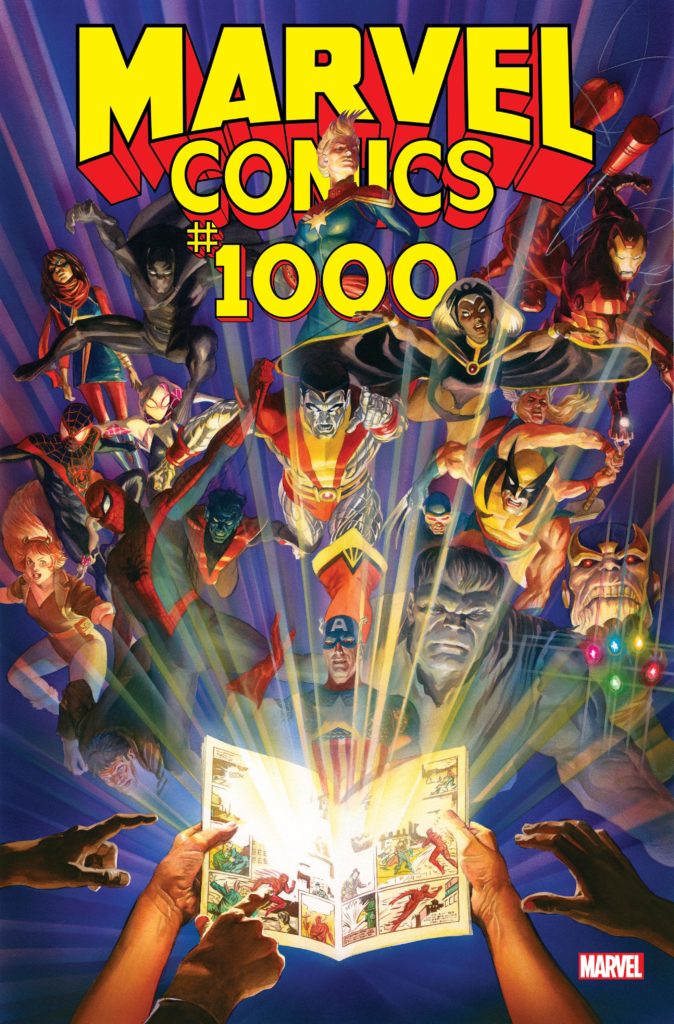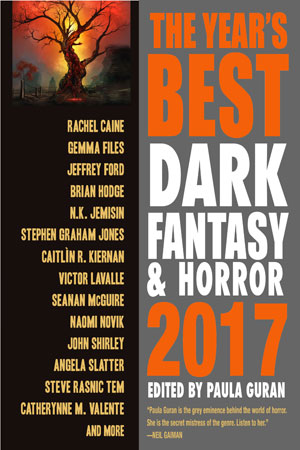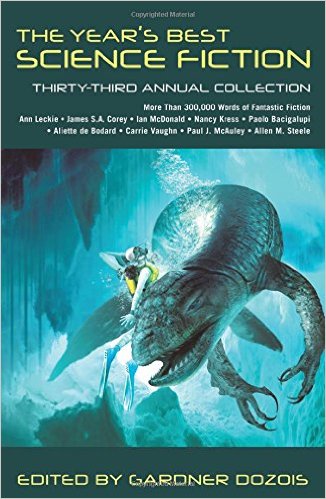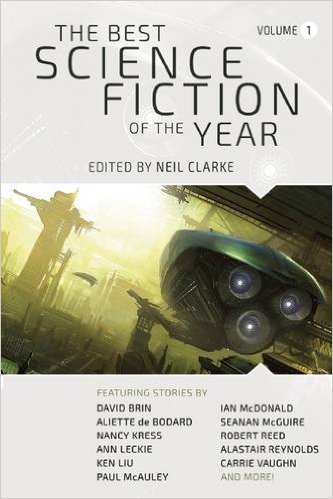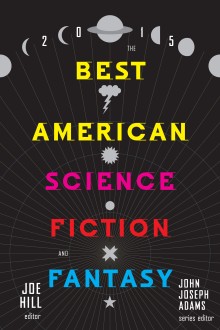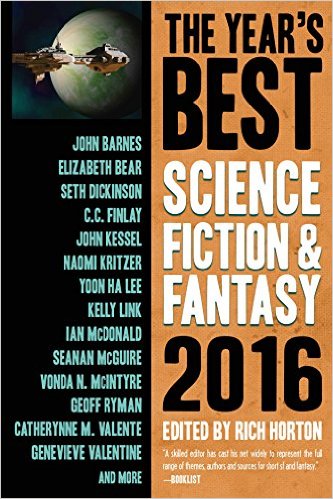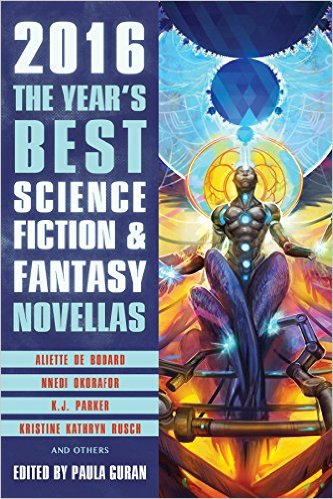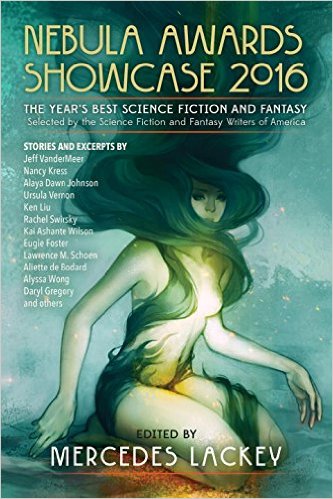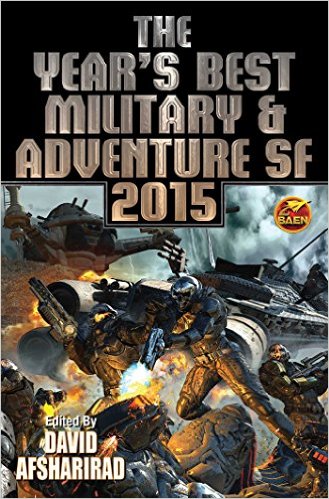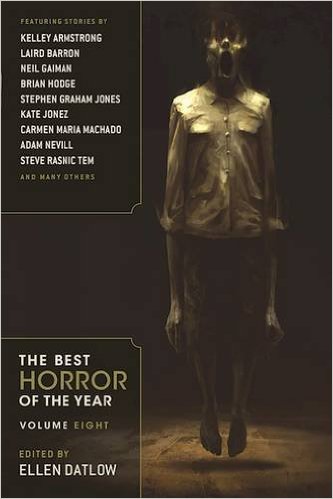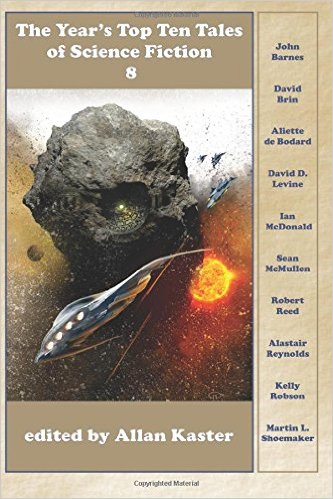(1) STOKER AWARD UPDATE SPARKS KERFUFFLE. [Item by Anne Marble.] The Horror Writers Association has realized that Camp Damascus by Chuck Tingle was in the wrong category in the list of finalists — it is not a YA novel. So they moved it to the Adult category – increasing the finalists there from five to six (i.e, nobody was dropped). And because of this change, they added a YA novel by author Kalynn Bayron to the YA category.

But as a result, some people are yelling at Kalynn Bayron on social media — apparently because they think she “stole” the nomination from Chuck Tingle. And Brian Keene has stepped in and asked people to yell at Mr. Keene instead. Let’s see if the people who were so eager to yell at Kalynn Bayron (a young Black YA author) are just as eager to yell at Brian Keene. (Somehow, I doubt it.)


(2) STOKERCON GOH NEWS. Paula Guran will be unable to attend StokerCon 2024 the convention announced today in a newsletter. A reason was not given; the committee hopes she will be able to join them at a future event.
The remaining GoHs are Justina Ireland, Nisi Shawl, Jonathan Maberry and Paul Tremblay.
(3) ANNUAL YARDSTICK. Publishers Weekly reports “New Lee & Low Diversity Baseline Survey Finds Minor Changes” in the publishing industry.
The third edition of Lee & Low Books’ quadrennial “Diversity Baseline Survey” found that the publishing industry has made incremental gains in broadening its workforce since the survey was introduced in 2015.
The survey’s top-line findings show that white people made up 72.5% of this year’s 8,644 respondents, down from 76% in 2019 and 79% in 2015. Those identifying as biracial/multiracial were the second largest group, at 8.3%—a significant increase over the 3% in 2019 who identified as biracial/multiracial. The percentage of respondents who were Asian/Native Hawaiian/Pacific Islander/South Asian/Southeast Indian rose slightly, to almost 8%, from 7% in 2019. Black respondents held even at about 5% of the publishing workforce, while those identifying as Hispanic/Latino/Mexican fell to 4.6%, from 6% in both 2019 and 2015….
(4) REACH OUT. Dream Foundry calls for donations to “Con or Bust”, which seeks to assist creators or fans of color with opportunities they can’t afford:
Con or Bust has received a slew of applications for extremely exciting opportunities that we are not currently able to fund or support. You can help us change that! Since late October, we’ve had to defer or decline 14 applications requesting over $25,000 in fiscal support. In most cases even a small portion of the request made as a grant would be a huge help to the applicant. Most fiscal grants we’ve made are $500, and that’s also the largest amount we’ve granted out of our unrestricted funds. …
…If you’ve ever been to an industry event that inspired, motivated, or nurtured you, then you know what these opportunities can mean. Help us bring that to more people!
(5) WRITERS AND ARTISTS, GET READY. Dream Foundry is also looking ahead to their annual Writing and Arts Contest which opens to submissions from April 1 through May 27, 2024.
(6) MACHINES IN TRAINING. Rivka Galchen is “Thinking About A.I. with Stanisław Lem” in The New Yorker.
…“Solaris” is mostly serious in tone, which makes it a misleading example of Lem’s work. More often and more distinctively, he is funny and madcap and especially playful on the level of language. A dictionary of his neologisms, published in Poland in 2006, has almost fifteen hundred entries; translated into English, his invented words include “imitology,” “fripple,” “scrooch,” “geekling,” “deceptorite,” and “marshmucker.” (I assume that translating Lem is the literary equivalent of differential algebra, or category theory.) A representative story, from 1965, is “The First Sally (A) or, Trurl’s Electronic Bard.” Appearing in a collection titled “The Cyberiad,” the story features Trurl, an engineer of sorts who constructs a machine that can write poetry. Does the Electronic Bard read as an uncanny premonition of ChatGPT? Sure. It can write in the style of any poet, but the resulting poems are “two hundred and twenty to three hundred and forty-seven times better.” (The machine can also write worse, if asked.)
It’s not Trurl’s first machine. In other stories, he builds one that can generate anything beginning with the letter “N” (including nothingness) and one that offers supremely good advice to a ruler; the ruler is not nice, though, so it’s good that Trurl put in a subcode that the machine will not destroy its maker. The Electronic Bard is not easy for Trurl to make. In thinking about how to program it, Trurl reads “twelve thousand tons of the finest poetry” but deems the research insufficient. As he sees it, the program found in the head of even an average poet “was written by the poet’s civilization, and that civilization was in turn programmed by the civilization that preceded it, and so on to the very Dawn of Time.” The complexity of the average poet-machine is daunting….
(7) THE ROOM WHERE IT HAPPENS. It was the club’s first in-person meeting outside of a Loscon since the pandemic. See photos at “We’re Back Baby! LASFS 1st Meeting in Years” on the Los Angeles Science Fantasy Website.
(8) OCTOTHORPE. Episode 104 of the Octothorpe podcast is “Groundbreaking and Great”. And humble!
Octothorpe 104 is here! We know you’ve eagerly been awaiting our takes on the Hugo Awards, so here they all are, as we discuss our favourite SF of 2023!
Hang on, what do you mean? Something else happened with the Hugo Awards and you thought we were talking about that? Well, er…maybe next time!

(9) FREE READ. Worlds of If #177 is available as a free download for a limited time at the Worlds of If Magazine website. And the print version and t-shirts are also available for order there.

(10) JAIME LEE MOYER HAS DIED. Author and poet Jaime Lee Moyer was found dead today after friends requested a wellness check. C.C. Finlay announced on Facebook:
Dear friends of Jaime Lee Moyer, we have some very sad news. No one had heard from Jaime in more than ten days, which was concerning because her latest book was scheduled for release this week.
This morning we contacted her rental company and the East Lansing Police Department and asked them to perform a wellness check. They found Jaime deceased in her bedroom, apparently from natural causes. They’ve contacted her family to make formal arrangements. We only just received the news, and we don’t know any other information at this time.
Jaime has friends in the writing community all over the world. We thought this would be the best way to reach you. If you are a friend of hers, a client, or are waiting to hear an answer from her on anything else, we wanted you to know as soon as possible.
With love and grief,
Charlie and Rae
(11) TODAY’S BIRTHDAY.
[Written by Cat Eldridge.]
Born February 29, 1952 — Tim Powers, 72. Now Tim Powers is a writer that I really admire. He’s decently prolific as he has twenty novels published. Now remember this essay is about what I like, so I may or may not mention what something that you, so please do t be too miffed by that.
Where to start? That’s easy as it has to be The Anubis Gates. Victorian London and Egypt. Ancient Egypt. Time travel. Anubis. Oh ymmm. It’s on my list of To Be Listened To list as I’ve already read it several times and the sample at Audible indicates Bronson Pinchot does a great job of narrating this.

Just as good in a very different manner is On Stranger Tides takes place during the so-called Golden Age of Piracy which was nothing of the kind, when an individual on his way from Britain to Haiti has a series of increasingly wild adventures. I know the novel was purchased to be part on the Pirates of Caribbean franchise. I’ve not seen the film, so I don’t know how much, if anything of his novel made it into the film, but I’m betting nothing except the name did.
Declare, a secret history of the Cold War, is extraordinary. I mean it really. When I was still actually reading novels as opposed to listening to them, as I’m doing now, I didn’t spend six to eight hours a day on one but I remember I did on Declare just to see where the story went. Stellar.
The Vickery and Castine series is just fun, and I mean that as a compliment. Set in contemporary LA, rogue federal agents Sebastian Vickery and Ingrid Castine can see ghosts and other things that are the secret reality of that city. It’s an ongoing series with four novels so far. Highly recommended.
Then there’s Three Days to Never which I’m not convinced actually makes sense but is really fun to read with its wild mix of supernatural history of what actually happened, time travel and foreign agents.
Ok, those are my picks as the Powers novels that I really like. So what’s your choices?
(12) COMICS SECTION.
- The Far Side has two hunters who took down the wrong quarry.
- The ArgyleSweater points out the danger of shopping.
- Peanuts – published in 1955 — has Lucy laughing at Charlie Brown’s space news.
- Saturday Morning Breakfast Cereal is still figuring out how to get Earth demoted to Pluto’s status.
(13) TWO COMPANIONS CUT A RUG. Radio Times makes sure we don’t miss out when “Karen Gillan and Jenna Coleman share cute Doctor Who reunion”.
Amy Pond and Clara Oswald may have never met on-screen, but the former Doctor Who companions certainly look like they get along behind the camera.
Karen Gillan (Amy) and Jenna Coleman (Clara) were spotted together at an event in London last night, with former Doctor Who showrunner Steven Moffat also in attendance.
Gillan took to the opportunity to share a video of the trio on the dance floor on TikTok alongside the caption: “We might have had a few red wines… but look WHO it is!”…
(14) AGBABI Q&A. HAL interviews 2021 Clarke Award nominee Patience Agbabi, author of The Past Master, at Carbon-Based Bipeds.
HAL: Hello Patience, and congratulations to you on finishing your tetralogy. I’m curious, did you always know this would be a four-book cycle or did the project grow more organically?
PATIENCE: …In reality, a series made sense for lots of other reasons since I had too many ideas to fit into a single book: I wanted to explore the past as well as the future; to take different angles on ecological issues, becoming more covert as the series progressed; and also, I wanted to develop my hero, Elle, from a 3-leap girl to a 4-leap young woman. Elle is black, of Nigerian origin and autistic. It was a positive challenge to show the reader how she overcomes numerous obstacles to reach maturity. I originally submitted the manuscript as young YA but Canongate wanted to market it as middle-grade since my hero was 12 and children like to read up. But since my hero gets one year older with each instalment, I knew I’d be segueing into YA territory anyway, which demands a greater level of introspection.
(15) STRINGS ATTACHED. SOMETIMES. “Muppets, marionettes and magic: My life with puppets” – hear an interview with Basil Twist, who created puppets for the My Neighbour Totoro production by the Royal Shakespeare Company at BBC Sounds.

Basil Twist’s fascination for puppets started as a child watching productions his mum put on as an amateur puppeteer. Basil built his own puppet characters of Star Wars as a kid and loved it, but became a ‘closeted puppeteer’ in his teens. It wasn’t cool anymore, and playing with dolls was seen as feminine. Basil pursued an education at college, but became unhappy and dropped out. Later moving to New York, Basil could finally embrace his puppetry passions. He scoured phone books and bashed phones to track down people involved in puppetry. His diligence took him around the world, winning awards and captivating crowds along the way. During the pandemic Basil found his biggest challenge to date – bringing the much-loved animated Japanese character Totoro to life for a live action stage show….
(16) OUTSIDE THE BOX. The Onion reports “Litter-Robot Recalls Thousands Of Self-Cleaning Litter Boxes That Accidentally Transported Cats To Year 1300”. (Could they be using the same version of the software as my comments section, which unaccountably tells people they’re in random years?)
(17) TODAY’S THING TO WORRY ABOUT. Jessica Grose wonders “Could Swifties or Trekkies Decide the Election?” in a New York Times opinion piece. (Well, maybe I exaggerate. I don’t think it really worries her.)
…Social media is where many young voters live — about a third of adults under 30 regularly get news from TikTok, according to Pew Research. And turning out young voters who are otherwise not particularly politically engaged will be key to winning elections up and down the ballot in November. The left-leaning Working Families Party isn’t exactly a threat to take the White House in 2024, but it is on to a new way of reaching Gen Z voters at a time when the old ways are increasingly useless.
As Marcela Valdes explained this week for The New York Times Magazine, young voters tend to have low turnout rates. “No one is more ambivalent about participating in elections than young people,” she wrote. (It’s worth noting, though, that turnout among Americans ages 18 to 29 was historically high in 2018, 2020 and 2022, according to C.I.R.C.L.E., the Center for Information and Research on Civic Learning and Engagement at Tufts University.)…
(18) TOMORROW’S THING TO WORRY ABOUT! Kathryn Schulz doubts we’re prepared for “What a Major Solar Storm Could Do to Our Planet” as she tells readers of The New Yorker.
…But “space-weather forecaster” is an optimistic misnomer; for the most part, he and his colleagues can’t predict what will happen in outer space. All they can do is try to figure out what’s happening there right now, preferably fast enough to limit the impact on our planet. Even that is difficult, because space weather is both an extremely challenging field—it is essentially applied astrophysics—and a relatively new one. As such, it is full of many lingering scientific questions and one looming practical question: What will happen here on Earth when the next huge space storm hits?
The first such storm to cause us trouble took place in 1859. In late August, the aurora borealis, which is normally visible only in polar latitudes, made a series of unusual appearances: in Havana, Panama, Rome, New York City. Then, in early September, the aurora returned with such brilliance that gold miners in the Rocky Mountains woke up at night and began making breakfast, and disoriented birds greeted the nonexistent morning.
This lovely if perplexing phenomenon had an unwelcome corollary: around the globe, telegraph systems went haywire. Many stopped working entirely, while others sent and received “fantastical and unreadable messages,” as the Philadelphia Evening Bulletin put it. At some telegraph stations, operators found that they could disconnect their batteries and send messages via the ambient current, as if the Earth itself had become an instant-messaging system.
Owing to a lucky coincidence, all these anomalies were soon linked to their likely cause. At around noon on September 1st, the British astronomer Richard Carrington was outside sketching a group of sunspots when he saw a burst of light on the surface of the sun: the first known observation of a solar flare. When accounts of the low-latitude auroras started rolling in, along with reports that magnetometers—devices that measure fluctuations in the Earth’s magnetic field—had surged so high they maxed out their recording capabilities, scientists began to suspect that the strange things happening on Earth were related to the strange thing Carrington had seen on the sun….
[Thanks to John King Tarpinian, Chris Barkley, Cat Eldridge, Daniel Dern, Kathy Sullivan, Lise Andreasen, JeffWarner, Anne Marble, Jean-Paul Garnier, Jeffrey Smith, SF Concatenation’s Jonathan Cowie, Steven French, Mike Kennedy, and Andrew Porter for some of these stories. Title credit belongs to File 770 contributing editor of the day JeffWarner.]

